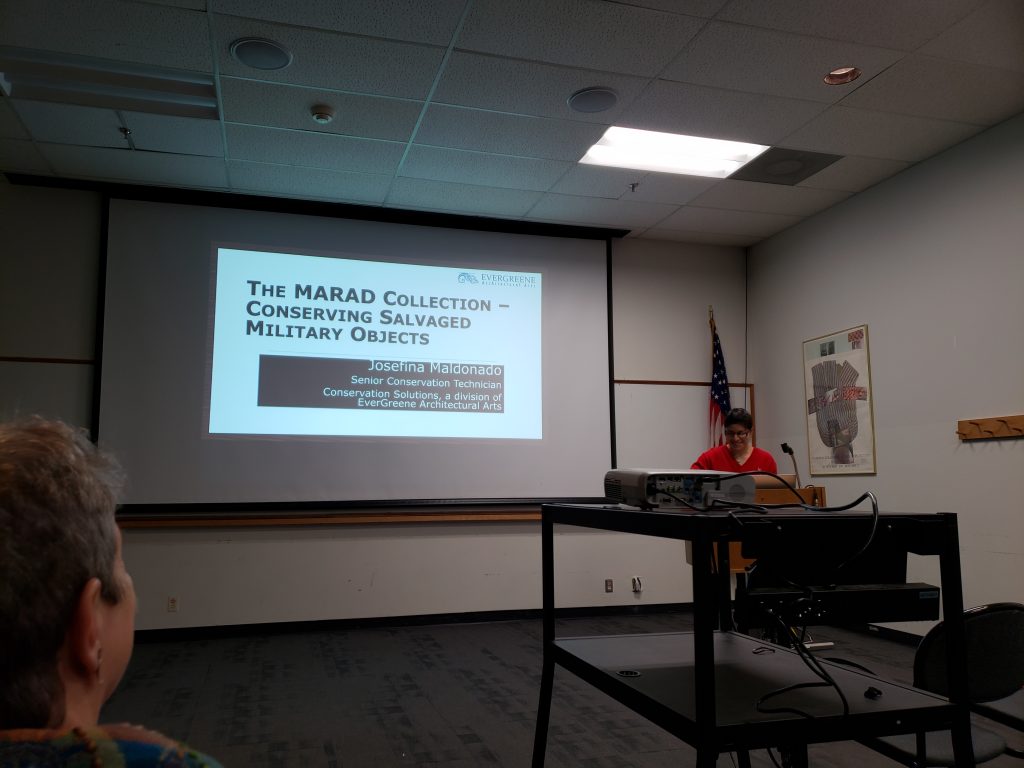“The MARAD Collection – Conserving Salvaged Military Objects”
Josefina Maldonado, Senior Conservation Technician at Conservation Solutions, a division of EverGreene Architectural Arts

The Maritime Administration (MARAD), under the U.S. Department of Transportation, maintains a collection of artifacts from merchant vessels. Many of their objects were, until recently, in unsatisfactory storage conditions and required various levels of conservation treatment.
Conservation Solutions, a division of Evergreene Architectural Arts, was contracted to carry out the treatments for these objects.
Josefina Maldonado was hired in 2017 to help treat these maritime artifacts, and later in the same year was asked to take over the project after the previous project manager moved on from the company.The first line of business was to carry out an assessment of the project. It was determined that the project had previously been hindered by inconsistent procedures and standards, and that the present timeline for object treatment would not meet the project deadline.
A new plan of action was developed, starting with an initial inventory of objects to determine what needed to be picked up or delivered from the MARAD storage facility, followed by a secondary inventory once the objects were in Evergreene’s studio. Object tags with colored stickers and an Excel spreadsheet helped to keep track of each object’s condition, status, and treatment. Objects were split into 26 different object groups to aid in organization.
Staff members had to be trained on consistent methods for treatment and photography. Protocols were created for these areas, with various treatment categories defined and standardized, such as such as wet and mechanical cleaning. With these new measures in place, the staff met the original project deadline, treating 1,574 objects between December 2016 and December 2018.
Josefina finished her presentation with a quick glance at some of the treatments encountered along the way. These included the treatment of ship bells coated with lead-based paint—a health hazard that had to be dealt with by subcontractors—and the cleaning of ship steering wheels with an industrial degreaser. Occasionally, bronze metal objects such as ship builder’s plates had a patina applied to offset inconsistent surface tone, so that they would have a more rustic appearance. Overall, everything came together thanks to the hard work and organization of Josefina, as well as senior staff and technicians at Evergreene.
Summary by:
Austin Anderson, Graduate Intern in Objects Conservation, The Walters Art Museum
S. Dillon Ripley Center, Smithsonian Institution, Washington, DC
9 January 2020